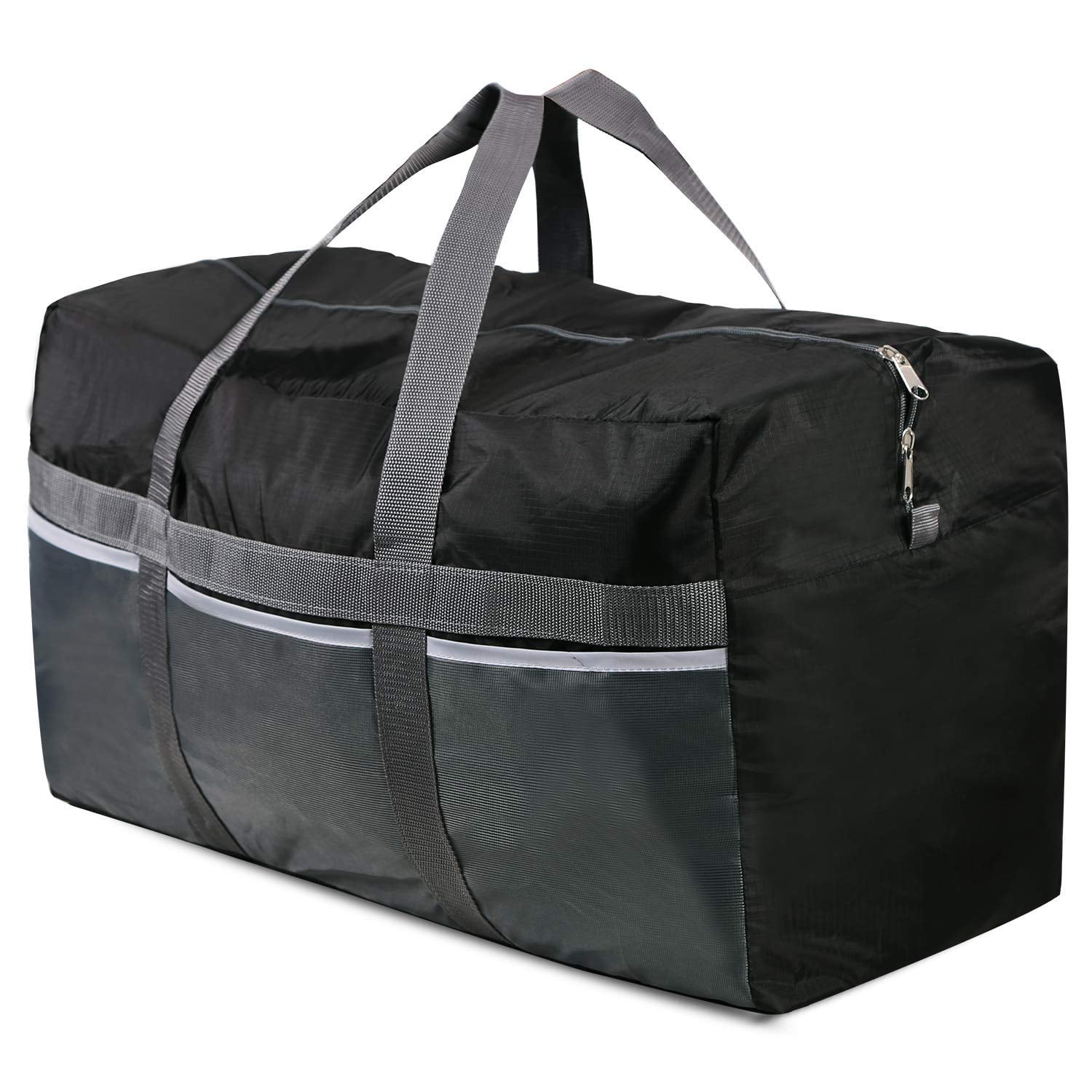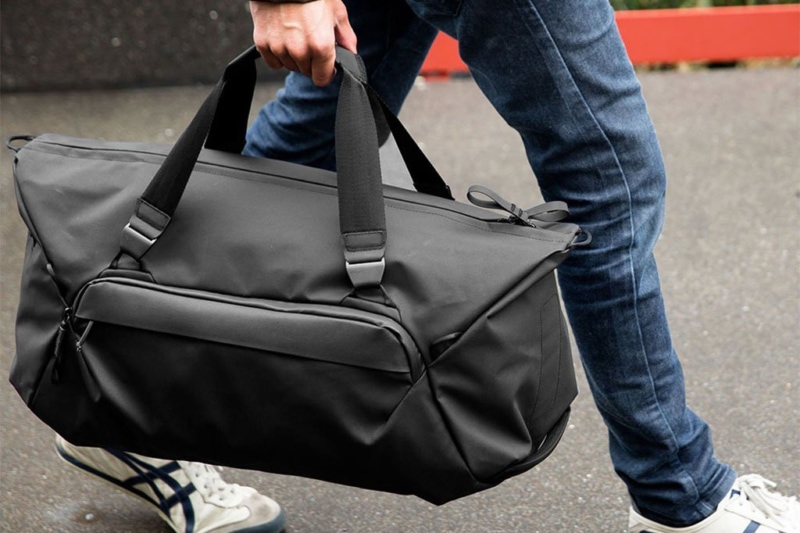Navigating Carry-On Conundrums: The Duffle Bag Dilemma
Decoding Duffle Bag Dimensions for Air Travel
Ever found yourself in that familiar pre-trip puzzle: will this trusty duffle bag make the cut as a carry-on, or is it destined for the baggage carousel abyss? It’s a moment every traveler knows, that silent negotiation with your luggage as you mentally compare it to those somewhat mysterious size limits airlines publish. The truth, as it often is, isn’t a simple yes or no. It’s more of a “well, that depends,” seasoned with airline rules and your personal packing strategy. Let’s explore this together, shall we?
Generally, most major airlines have set their carry-on parameters around the ballpark of 22 inches x 14 inches x 9 inches (or 56 cm x 35 cm x 23 cm). And remember, that includes any handles or wheels sticking out. Now, the beauty of many duffle bags lies in their soft construction, offering a bit more give than a rigid suitcase. You might just manage to coax a slightly larger duffle into those overhead compartments — a testament to its adaptable nature. However, relying on this “squish factor” can be a risky endeavor. You wouldn’t want to be the reason for a boarding delay, wrestling with an uncooperative bag and a very official-looking airline employee.
Think about what you’re using your duffle for. Is it a neat little bag for a weekend escape, or a substantial carrier that seems capable of holding your entire life and maybe a small, well-behaved dog (again, please don’t try)? The size you need for a short jaunt versus a longer exploration will naturally differ. Opting for a duffle bag specifically labeled as “carry-on compliant” is often your wisest move. These are designed with airline restrictions in mind, maximizing what you can pack while minimizing the chance of a surprise baggage fee at the gate. Nobody enjoys that particular financial bump in the travel road.
Also, keep in mind that even if your duffle bag technically meets the size rules, what you put inside matters. Overstuffing it to the point where it bulges and loses its intended form could still raise concerns. It’s like trying to fit too much good stuff into a small container — it might technically close, but it’s not ideal and could cause issues later (or, in this case, above your head). Pack thoughtfully, not just a lot!
Decoding Airline Dimensions: A Traveler’s Rosetta Stone
Understanding Varying Carry-On Policies
Here’s a little insight that experienced travelers often share: not every airline operates by the same playbook when it comes to carry-on allowances. What’s perfectly acceptable on one airline might be deemed oversized on another. Budget-friendly carriers, in particular, often have stricter, sometimes smaller, size limits, and they might come with noticeable charges for exceeding them. It really pays to do your homework before you even think about packing. Take a look at the airline’s official website and carefully read their carry-on baggage policy. Don’t depend on old information or that story your friend told you about their bag that *almost* fit.
Pay close attention to the exact measurements given, any weight restrictions (yes, some airlines do weigh those carry-ons!), and any specific rules about the type of bag. Some airlines might have different rules for what they consider a “personal item” versus a standard carry-on. Your trusty duffle might qualify as a personal item on some flights if it’s small enough to tuck under the seat in front of you, potentially allowing you to also bring a separate, slightly larger carry-on. Understanding these subtle differences can be a real advantage for smart packers.
Think of airline baggage policies as their own language. Each airline has its own set of rules and regulations. Not understanding this language can lead to frustrating and costly misunderstandings at the airport. So, before your trip begins, take a moment to decipher those baggage guidelines. It might seem a bit tedious, but your wallet (and your travel peace of mind) will appreciate it later. Consider making a quick note for each flight, outlining their specific carry-on allowances.
And here’s a helpful tip: if your journey involves flying with more than one airline, make sure your carry-on adheres to the *most restrictive* size and weight limitations among them. This way, you avoid any unpleasant surprises along the way. It’s always wiser to lean towards a slightly smaller bag than to face the awkwardness (and expense) of having to check your beloved duffle at the gate.
The Art of Packing Light (and Smart) in Your Duffle
Maximizing Space and Minimizing Bulk
So, your duffle bag is within the airline’s size guidelines? Excellent news! But the journey isn’t over yet. Now comes the important part: packing it efficiently. A well-organized smaller duffle can often hold more than a carelessly stuffed larger one. Think of it as the difference between a neatly arranged drawer and one that’s overflowing. The key is to use clever packing techniques that maximize space and reduce bulk. Rolling your clothes instead of folding them, for example, can save a surprising amount of room and also help minimize wrinkles. It’s like a little packing secret.
Make use of every available bit of space inside your duffle bag. Stuff socks and smaller items inside your shoes. Use packing cubes to compress your clothing and keep everything in order. These little fabric organizers are incredibly useful, believe me. They not only help you separate your belongings but also allow you to fit more into a smaller area. Think of them as puzzle pieces for your luggage, fitting everything together neatly and efficiently. Plus, finding what you need once you arrive becomes much simpler.
Consider how the weight is distributed as well. Place heavier items closer to the bottom of the bag (the side that will be near the wheels if it has them, or the bottom when you’re carrying it). This helps keep the bag balanced and prevents it from feeling awkward to carry. And be honest with yourself about what you really need to bring. Do you truly need that extra pair of shoes or that “just in case” outfit? Every item you leave behind is less weight and more space in your valuable carry-on.
Remember the 3-1-1 liquids rule for carry-ons in many parts of the world: containers of 3.4 ounces (100 milliliters) or less; all fitting into one quart-sized, clear, plastic, zip-top bag; one bag per passenger. Don’t let oversized toiletries be the reason your perfectly sized duffle gets flagged. Invest in travel-sized containers or transfer your favorite products into smaller bottles. It’s a small step that can save you a big headache at airport security.
Duffle Bag Advantages: Why They Remain a Traveler’s Favorite
The Undeniable Appeal of Soft-Sided Luggage
Despite the size considerations, duffle bags hold a special appeal for many travelers, and there are good reasons for this. Their soft sides offer a flexibility that rigid suitcases simply can’t match. This adaptability can be a real advantage when trying to fit your bag into an overhead compartment that seems just a little too small. You can often maneuver and shape a duffle bag into tighter spaces, something impossible with a hard-shell suitcase. It’s like having a travel companion that can adapt to its surroundings (within reasonable limits, of course).
Duffle bags often come equipped with a variety of pockets and compartments, making organization much easier. Unlike the single, open space of some suitcases, duffles frequently feature zippered side pockets, front pouches, and internal dividers, allowing you to keep shoes separate from clothes, toiletries away from electronics, and so on. This easy access can be incredibly helpful when you need to quickly grab something during your journey without having to unpack everything. It’s like having a portable organizer for your belongings.
Furthermore, duffle bags are often lighter than their wheeled suitcase counterparts. This can be a significant benefit, especially on airlines with strict weight limits for carry-ons. Every bit of weight counts, and a lighter bag means you can pack more of what you actually need (or those extra souvenirs you might pick up). Plus, carrying a lightweight duffle through airports and onto trains is generally less of a struggle than dealing with a heavy, rolling suitcase, especially on uneven surfaces or stairs. Your shoulders will thank you for it.
And let’s not overlook the style aspect! Duffle bags come in a wide range of designs, from durable and sporty to elegant and sophisticated. You can find one that perfectly suits your personal travel style. It’s an opportunity to express a bit of your personality even before you reach your destination. So, while the size question might always be there, the inherent advantages of a duffle bag continue to make it a popular choice for travelers who value flexibility, organization, and a touch of personal style.
Frequently Asked Questions: Duffle Bags and Carry-On Limits
Your Burning Questions Answered
We understand you might still have some lingering questions about all this. Don’t worry, fellow traveler! We’ve gathered some of the most common inquiries regarding duffle bags and carry-on rules to help you navigate your travels with confidence (and hopefully, without any unexpected baggage fees).
Q: Will a slightly oversized duffle bag always be turned away as a carry-on?
A: Not necessarily in every situation, but it’s definitely a risk. It often depends on the specific gate agent, how full the flight is, and how obviously too big your bag appears. Playing it safe and sticking to the airline’s stated measurements is always the most reliable approach. Think of it as trying to get a free upgrade — sometimes it works, but it’s not something you should count on.
Q: Can I use a duffle bag as my personal item even if it’s larger than the under-seat dimensions?
A: Generally speaking, no. Personal items have their own set of size restrictions, which are typically smaller than standard carry-ons. Airlines are usually quite firm about what fits comfortably (and safely) under the seat in front of you. Trying to squeeze a larger duffle into that space will likely result in it being identified and potentially checked.
Q: Are there specific styles of duffle bags that are consistently accepted as carry-ons?
A: Yes, there are! Many brands specifically design duffle bags that are labeled as “carry-on compliant.” These bags are made to meet the typical size restrictions of most major airlines. Look for this designation when you’re shopping for a duffle bag for air travel. They offer the versatility of a duffle with the reassurance that it should fit in the overhead compartment.
Q: What happens if my duffle bag is considered too big at the gate?
A: Be prepared to pay a baggage fee, which can often be considerably more expensive than if you had checked the bag in advance. You’ll also have to gate-check your bag, meaning you won’t have access to its contents during the flight. This can be particularly inconvenient if you have medications or other essential items packed inside. It’s best to avoid this situation by double-checking your airline’s policy and measuring your bag before you leave for the airport. Trust us, your future self (and your bank account) will thank you.

Coach Men’s Duffle Bag Luggage Nar Media Kit

How To Pack A Duffle Bag For Travel Tortuga

Best Tactical Duffle Bags For Your Adventure In 2023 Atelieryuwa.ciao.jp

Redcamp Extra Large 31” Duffle Bag 96l Black Lightweight, Waterproof

Extra Large Heavy Duty Wheeled Travel Holdall Festival Holiday Duffle

The Best Carryon Duffel Bags For Travel Tested & Reviewed
Originally posted 2025-04-07 17:17:00.
